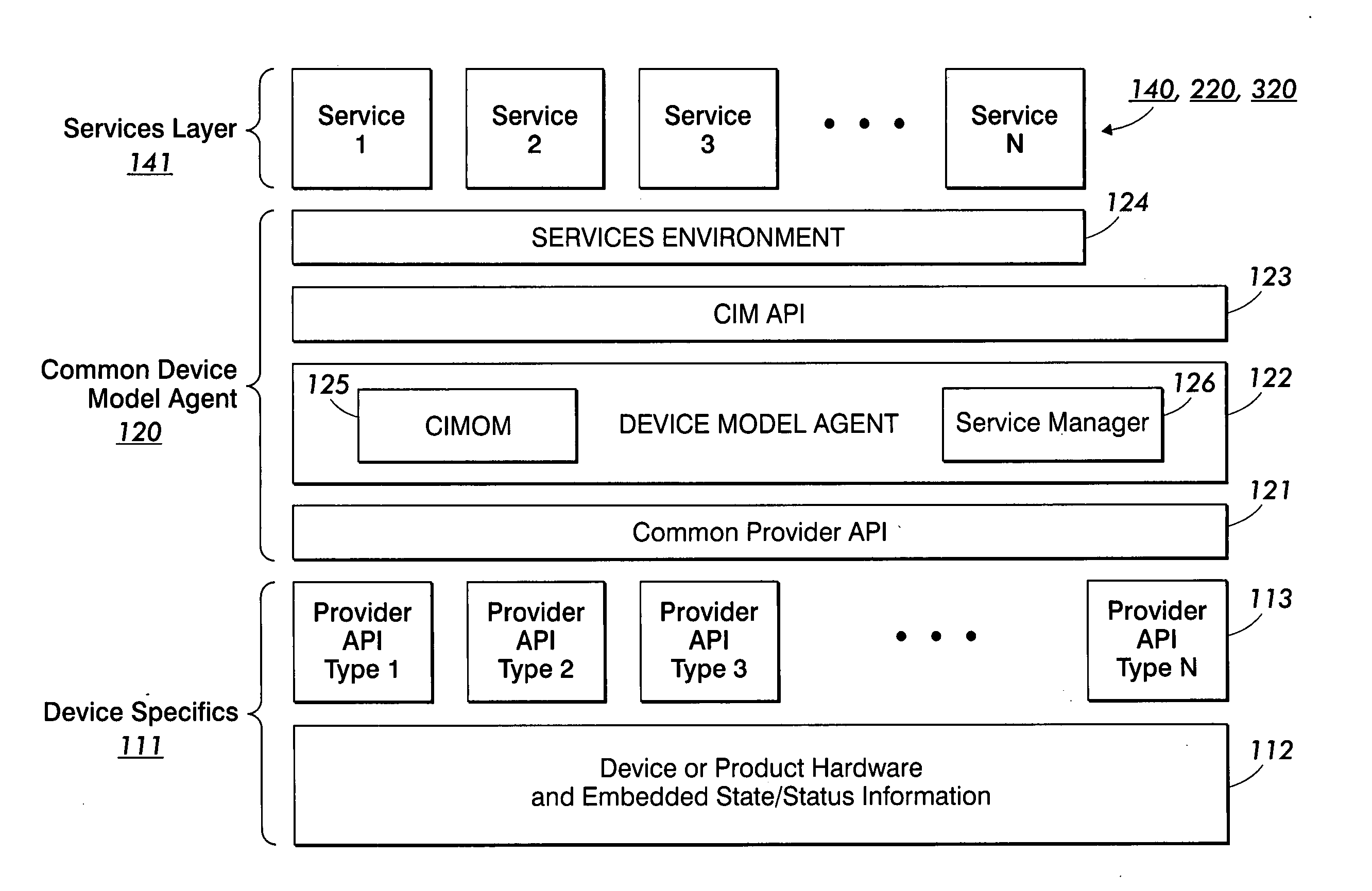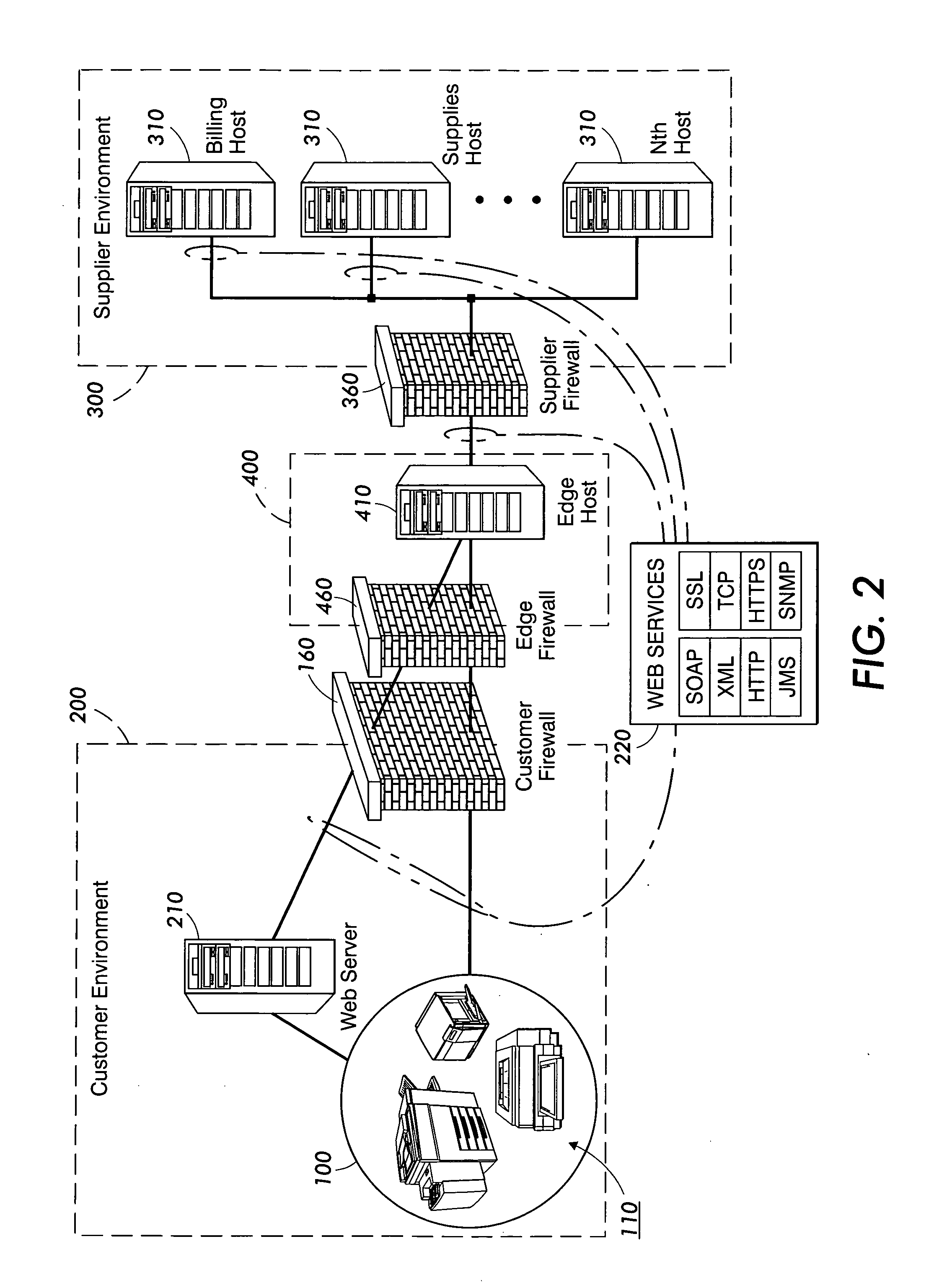Device model agent
- Summary
- Abstract
- Description
- Claims
- Application Information
AI Technical Summary
Benefits of technology
Problems solved by technology
Method used
Image
Examples
Embodiment Construction
[0046] For a general understanding of the present invention, reference is made to the drawings. In the drawings, like reference numerals have been used throughout to designate identical elements.
[0047] Embodiments provide a system 1 composed of several types of distributed software and hardware components that ensure physical and logical system design flexibility and responsibility of the components. Embodiments employ an architecture including, for example, devices 110 in the user / user environment 100, an asset management system 200 that can be in the user's network or environment 100, and a services host 310 that provides services 320 to which devices can subscribe. System management and services are provided in a system where devices are active participants in both their own services and lifecycle needs as well as those services and lifecycles in which they are only a part.
[0048] Using the Device Model Task Force (DMTF) Common Information Model (CIM) as a base, service manageme...
PUM
 Login to View More
Login to View More Abstract
Description
Claims
Application Information
 Login to View More
Login to View More - R&D
- Intellectual Property
- Life Sciences
- Materials
- Tech Scout
- Unparalleled Data Quality
- Higher Quality Content
- 60% Fewer Hallucinations
Browse by: Latest US Patents, China's latest patents, Technical Efficacy Thesaurus, Application Domain, Technology Topic, Popular Technical Reports.
© 2025 PatSnap. All rights reserved.Legal|Privacy policy|Modern Slavery Act Transparency Statement|Sitemap|About US| Contact US: help@patsnap.com



